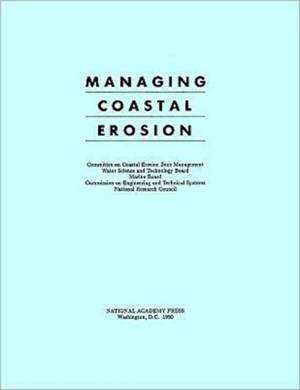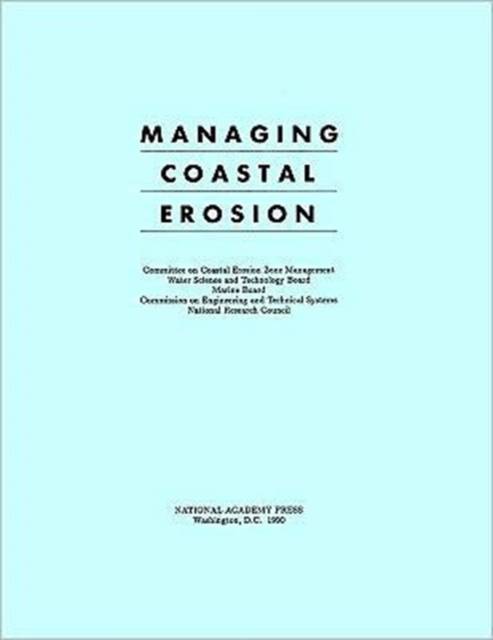
- Afhalen na 1 uur in een winkel met voorraad
- Gratis thuislevering in België vanaf € 30
- Ruim aanbod met 7 miljoen producten
- Afhalen na 1 uur in een winkel met voorraad
- Gratis thuislevering in België vanaf € 30
- Ruim aanbod met 7 miljoen producten
Zoeken
Managing Coastal Erosion
Committee on Coastal Erosion Zone Management, Water Science and Technology Board, Marine Board, National Research Council, Commission on Engineering and Technical Systems, Division on Engineering and Physical Sciences
Paperback | Engels
€ 53,45
+ 106 punten
Omschrijving
More and more of the nation's vast coastlines are being filled with homes and vacation resorts. The result is an increasing number of structures built on erosion-prone shores--with many of these structures facing collapse or damage. In response to mounting property losses, Congress has given the Federal Emergency Management Agency responsibility for incorporating coastal erosion into its National Flood Insurance Program (NFIP).
This book from the National Research Council addresses the immediate question of how to develop an erosion insurance program--as well as the larger issues raised by the continually changing face of our nation's shorelines.
Managing Coastal Erosion explores major questions surrounding a national policy on coastal erosion: Should the federal government be in the business of protecting developers and individuals who build in erosion-prone coastal areas? How should such a program be implemented? Can it prompt more responsible management of coastal areas?
The volume provides federal policymakers, state floodplain and resource managers, civil engineers, environmental groups, marine specialists, development companies, and researchers with invaluable information about the natural processes of coastal erosion and the effect of human activity on those processes. The book also details the workings of the NFIP, lessons to be learned from numerous state coastal management programs, and much more.
This book from the National Research Council addresses the immediate question of how to develop an erosion insurance program--as well as the larger issues raised by the continually changing face of our nation's shorelines.
Managing Coastal Erosion explores major questions surrounding a national policy on coastal erosion: Should the federal government be in the business of protecting developers and individuals who build in erosion-prone coastal areas? How should such a program be implemented? Can it prompt more responsible management of coastal areas?
The volume provides federal policymakers, state floodplain and resource managers, civil engineers, environmental groups, marine specialists, development companies, and researchers with invaluable information about the natural processes of coastal erosion and the effect of human activity on those processes. The book also details the workings of the NFIP, lessons to be learned from numerous state coastal management programs, and much more.
Specificaties
Betrokkenen
- Auteur(s):
- Uitgeverij:
Inhoud
- Aantal bladzijden:
- 204
- Taal:
- Engels
Eigenschappen
- Productcode (EAN):
- 9780309083713
- Verschijningsdatum:
- 15/01/1990
- Uitvoering:
- Paperback
- Formaat:
- Trade paperback (VS)
- Afmetingen:
- 152 mm x 229 mm

Alleen bij Standaard Boekhandel
+ 106 punten op je klantenkaart van Standaard Boekhandel
Beoordelingen
We publiceren alleen reviews die voldoen aan de voorwaarden voor reviews. Bekijk onze voorwaarden voor reviews.








